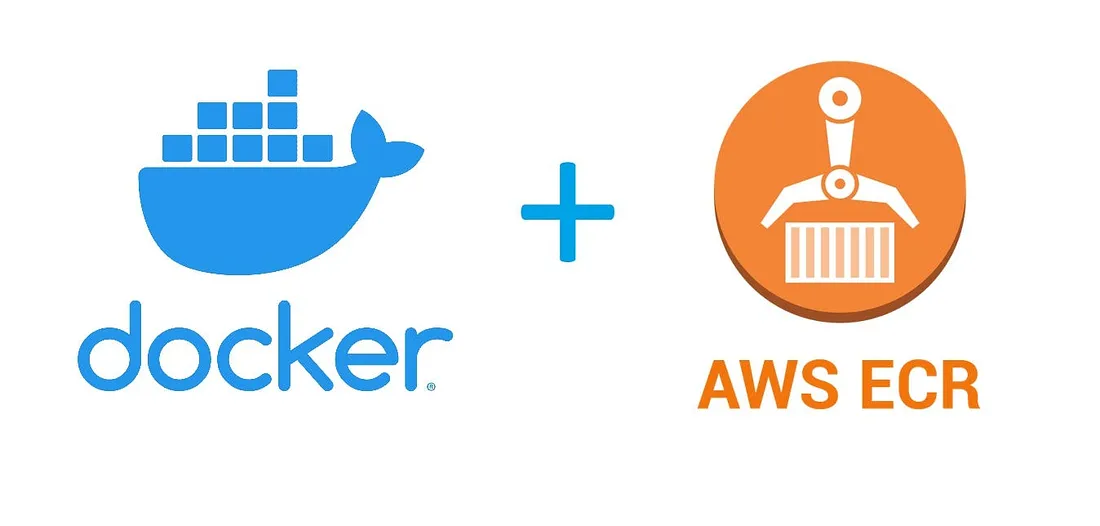Simplifying Container Management with AWS Elastic Container Registry (ECR)
 Amit Parad
Amit Parad
Simplifying Container Management with AWS Elastic Container Registry (ECR)
Amazon Elastic Container Registry (ECR) is a fully managed Docker container registry that simplifies the process of storing, managing, and deploying container images. Integrated with other AWS services like Amazon Elastic Kubernetes Service (EKS), Elastic Container Service (ECS), and AWS Lambda, ECR ensures that you can seamlessly deploy your containers across AWS infrastructure.
Key features include:
Fully Managed: No need to maintain infrastructure for hosting container images.
Secure: Integration with AWS Identity and Access Management (IAM) for fine-grained access control.
High Availability: AWS handles scaling and replication, ensuring your images are always available.
Lifecycle Policies: Automatically remove outdated images, reducing storage costs.
Let's take an example that if we are having the docker image in our personal laptop and if we want to share that docker image someone else in the world as they can be in the same region or in different region then with the help of the ECR we can put the docker image in the ECR and someone else who is sitting different region will be able to pull the image from ECR.
With the help of the ECR we can share the images across the globe.
Elastic means highly scalable & available in nature that means we can increase the capacity of these services to accommodate any number of the resources. That means any number of the container images is pay as you go model and AWS does not restrict you to with the number of the container images. AWS will take care of making sure that this service should be available all the time.
Feature | Docker Hub | AWS ECR |
Public/Private Repositories | Both public and private repositories available. | Primarily private, but supports public repositories. |
Cost | Free tier with limits, paid plans for additional features and usage. | Pay for storage and data transfer, no free tier. |
Integration with CI/CD | Works with most CI/CD tools but requires external configuration. | Seamlessly integrates with AWS CI/CD services (e.g., CodePipeline, CodeBuild). |
Security Features | Basic role-based access control, limited security scanning. | IAM-based security, image encryption, and automated vulnerability scanning. |
Availability & Scalability | Globally available, but scaling may depend on your Docker plan. | Highly scalable with AWS’s infrastructure, including multi-region support. |
Network Speed & Latency | Depends on Docker Hub infrastructure; public images may experience slower pull speeds. | Faster pulls within AWS services like ECS, EKS, or Lambda, especially in the same region. |
Tagging and Versioning | Supports tagging, versioning, and image labels. | Full support for tagging, versioning, and lifecycle policies to clean up old images. |
User Limits | Rate limits for free users (100 pulls per 6 hours). | No rate limits within the AWS environment; limits depend on the AWS account. |
Public Images | Hosts many public images, including official images (e.g., Ubuntu, NGINX, etc.). | Primarily used for private images, though you can make repositories public. |
CLI Integration | Direct integration with Docker CLI. | Requires AWS CLI or aws-ecr-login plugin for Docker CLI. |
Registry Location | Hosted by Docker Inc., images stored globally. | Images stored within AWS regions, enabling lower latency for AWS services. |
Now we can start the Practical Demonstration to understand more;
Go to the AWS Console.
Then click on Create
Previously as informed them that ECR is by default the Private registry.
Then provide the repository name.
Then keep Encryption setting as by default.
Now coming to the beast future of the ECR that Image Scanning Settings, So automatically when we are pushing the images then images would be scanned. If we can enable this feature AWS ECR will be going to scan our images. If the developer pushed the image it would be scanned and the status would be showing the image is scanned. Let's say push the image by the development team and I want to use that specific image then we can check the status of the security of that image and then only we can decide to use that image or not?
So Keep in mind that ECR is not a free service post implementation kindly delete the resources to avoid the charges.
We can enable this option.
Then Click on Create .
And our repository has been created.
This is the repo which has been created by us now simply we can pull , push the images so anybody can use it.
Then what do we do for the push commands?
Click on View push commands.
Post click on View push commands. By default it will be show the below steps: Follow the below steps as it is. I’m going to use the ubuntu EC2 instance for this demo so will follow Linux steps;
Before going ahead we need to have the aws cli installed on that ubuntu server. So I’m using ubuntu machine and following the above steps:
Created a simple docker file for practice purpose.
Successfully created the docker file. Then below the docker image has been created
Then tag the docker image.
Run the following command to push this image to your newly created AWS repository:
Yes, our docker image has been available in the AWS ECR .
Happy Learning!!
Subscribe to my newsletter
Read articles from Amit Parad directly inside your inbox. Subscribe to the newsletter, and don't miss out.
Written by

Amit Parad
Amit Parad
Experienced Cloud / DevOps Engineer with a passion for automating infrastructure and streamlining software delivery processes. Skilled in AWS, Docker, Kubernetes, CI/CD pipelines, Ansible, Terraform & Jenkins. Proven ability to collaborate with development, operations, and QA teams to ensure efficient and reliable deployments.